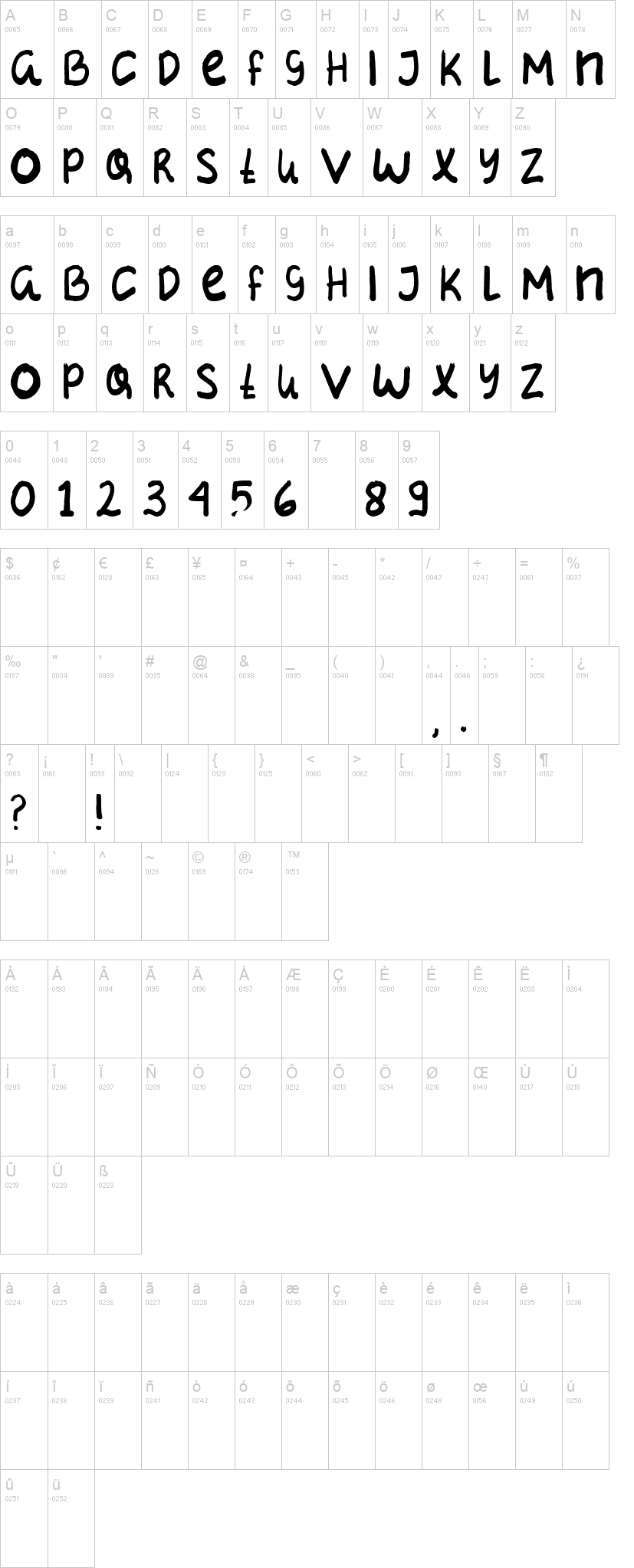


This is illustrated in the graphic below: Font anatomyīesides shapes, line width and letter width, it is mainly the x-height that is decisive for the optical size. The “p”, for example, extends below the baseline, the “a” stays in the middle, the “b” rises above the meanline, the “E” is located in the middle and at the top, the “O” ascends still a bit further and accented capitals win the height competition. Why is that?Ī letter has different anatomical features. Nevertheless, they appear different in size and their legibility varies, especially in small point sizes. There are fonts which are identical both in terms of body height (fonts set in 12 pt) and actually measurable letter size (same point size of the capital letters measured with the typometer). When considering sizes, we have to remember the effect a font has. Sometimes, they even reach beyond the boundaries set by the body height as is the case with the Scrubble font. Typefaces differ significantly in this regard.
#Font size tweeten full#
Typographers that prefer a more open, airy feel may cut away a lot of the letter body, whereas other fonts make full use of the available design space by reaching the boundaries of a glyph’s bounding box and beyond.ĭepending on how the available space is used, the actually measurable font will be bigger or smaller.
#Font size tweeten how to#
Typeface designers are free to decide how to use the body height to create a balance between printed glyph and non-printing space around it. Apart from the optical size, which is also important, the usage of the body height is decisive for the actually measurable final size. But this is not the case as you have probably noticed: Two different fonts set in the same point size can appear similar in size or look surprisingly different. So when entering 12 pt minus 15 percent, each font would then have an actually measurable height of 10.2 pt. the blank or empty portions of the letterform, for each font. Now one could assume that you would merely have to take away 15 percent of counter space, i.e. The PT Sans font set to 12 pt in InDesign the grey rectangle behind the font is 12 pt high which equals 4.233 mm and represents the body height. After all, when you enter a 12 pt font size in InDesign, you define the height of a glyph’s bounding box which corresponds to the height of the metal body the type was cast on in the early days. But the body height is still an important reference measure in font design. In the age of digital type, we no longer work with lead type. Hence, the body height is generally bigger than the printed glyph.įortunately, in our modern times we don’t have to carry around type cases anymore. When Gutenberg set a 12 pt font, it was the metal type and not the printed letter that had a vertical height of 12 points.
#Font size tweeten manual#
A metal sort from the times of manual typesetting It is surrounded by blank or empty portions of the letterform, the so-called counters. In manual typesetting, the body height is defined by the height of the lead type or metal sort on which the actual font face, the printing surface of the type, is moulded. Strictly speaking, the term is misleading since we don’t define the size of the font when setting the point value in InDesign, Word or other applications, but rather we specify the body height. So if you enter a 10 pt font size in Microsoft Word or Adobe InDesign, you define that your font will have a size of 3.53 mm. At 0.375 mm, it was slightly bigger than today’s PostScript or DTP point which measures 0.353 mm .

Different units of measurement were around over the years and centuries: The Didot point, a modified version based on the Fournier point, was the standard in the world of typography for a long time. So when talking about font size, it’s not metres and millimetres we use but the smallest typographic unit, the point, established in the early days of printing which has survived to date. When working with font, we don’t use the metric measurement system but typographic units. And this is quite understandable given the lack of concise and understandable guidelines on this subject. Many people are unsure when it comes to font sizes. For example, some universities still prescribe which typeface (Times New Roman) and point size (12 pt) to use for a dissertation which does not necessarily contribute to the legibility of a thesis. The web abounds with font size guidelines for students and other target audiences. But what exactly is the font size? Where is it measured and why are the letters of a Times typeface bigger than those of an English cursive font even though you have entered the same point value? font-size affects not only the font to which it is applied, but is also used to compute the value of em, rem, and ex length units.The font size is decisive for both legibility and text impact. The font-size property specifies the size, or height, of the font.


 0 kommentar(er)
0 kommentar(er)
